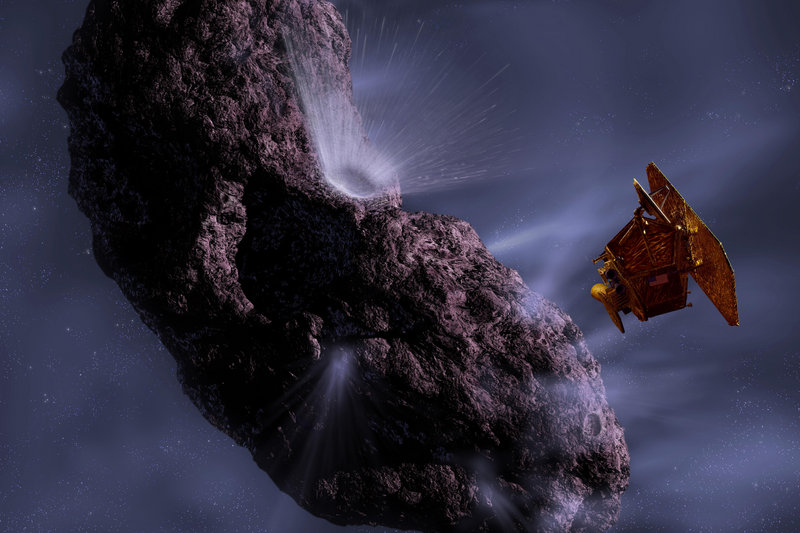LOS ANGELES – A NASA spacecraft is about to meet up with a comet half the size of Manhattan that had an encounter with another spacecraft not long ago.
The rendezvous between Stardust and comet Tempel 1 occurs today some 210 million miles from Earth. Hurtling at 24,000 mph, Stardust will fly within 125 miles of the potato-shaped comet, snapping pictures along the way.
If successful, it will be the first time that scientists will have before-and-after images of Tempel 1, allowing them to observe any changes on the uneven surface.
In 2005, Tempel 1 received a visit from another NASA probe named Deep Impact, which fired a copper bullet into the comet that excavated a crater. The high-speed crash hurled out so much dust and debris that Deep Impact failed to see the manmade hole even as it beamed back dazzling pictures of other surface features.
Scientists hope to get a second chance with Stardust, which is expected to pass near the 2005 bull’s-eye.
Comets, irregular bodies of ice and dust that orbit the sun, are frozen leftover building blocks of the solar system, which formed when a huge cloud of gas and dust collapsed about 4.5 billion years ago.
Scientists believe that studying comets could yield clues to the birth of the solar system.
Tempel 1 is not the first comet that Stardust has visited.
In 2004, it swooped past comet Wild 2 and captured a bounty of interstellar and comet dust. The probe jettisoned samples to Earth in a capsule that parachuted to the Utah desert — the first time that a spacecraft had fetched particles from a comet back to Earth.
Stardust has traveled 3.5 billion miles since launching from Cape Canaveral, Florida, in 1999.
Because it had ample fuel after visiting Wild 2, NASA decided to recycle it for another job. For the past four years, Stardust had its sights on Tempel 1, adjusting its path several times and even using a gravity assist from Earth to put it on target for a Valentine’s date.
“It’s got some mileage on it, but it’s still working well,” said project manager Tim Larson of the NASA Jet Propulsion Laboratory, which manages the encore mission.
Send questions/comments to the editors.



Success. Please wait for the page to reload. If the page does not reload within 5 seconds, please refresh the page.
Enter your email and password to access comments.
Hi, to comment on stories you must . This profile is in addition to your subscription and website login.
Already have a commenting profile? .
Invalid username/password.
Please check your email to confirm and complete your registration.
Only subscribers are eligible to post comments. Please subscribe or login first for digital access. Here’s why.
Use the form below to reset your password. When you've submitted your account email, we will send an email with a reset code.